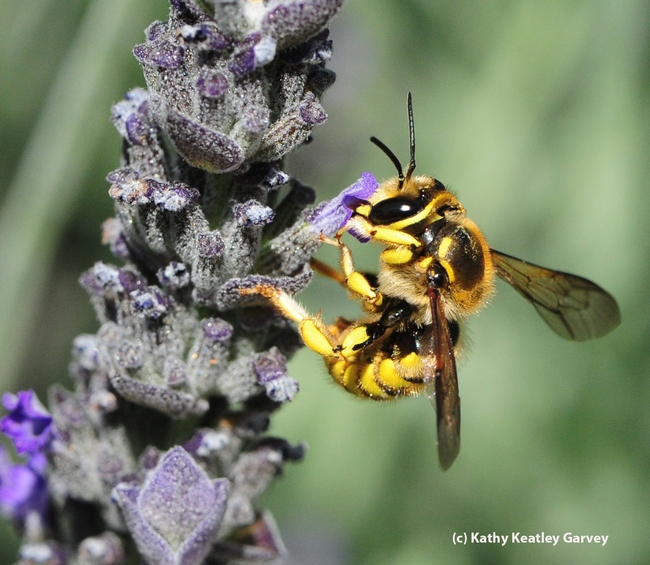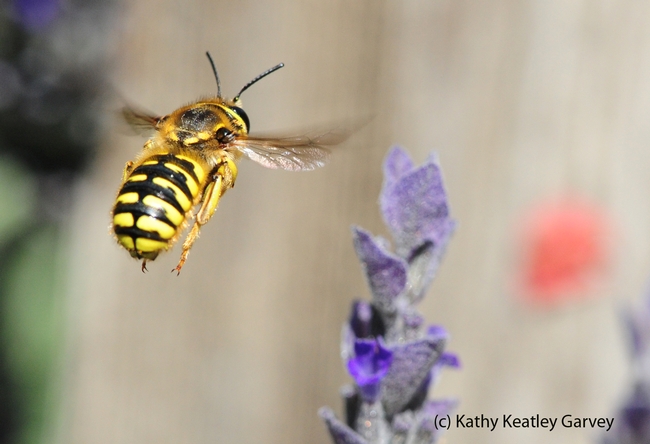Whether it's coming or going, you notice this pollinator's presence.
The European wool carder bee (Anthidium manicatum), so named because the female collects or cards "plant hairs" or "plant fuzz" to line her nest, is strikingly beautiful.
The bee is mostly black and yellow. The females, about the size of a worker honey bee, range in body length from 11 to 13 millimeters, while the males are 14 to 17 mm.
The males are very territorial. They put the "terror" in territorial. We see them hovering over the lavender in our yard and then bodyslamming honey bees. This behavior results in very skittish honey bees; no wonder honey bees don't linger on the blossoms long when their cousins show up!
The European wool carder bee, as its name implies, is a non-native. But so, too, are the honey bees, which European colonists brought to America in 1622.
The wool carder bee, according to research entomologist Tom Zavortink of the Bohart Museum of Entomology at UC Davis, was accidentally “introduced into New York state, presumably from Europe, before 1963.” It was not purposefully introduced to pollinate alfalfa, as some reports allege, he said.
Writing in a 2008 edition of the Pan-Pacific Entomologist, Zavortink and fellow entomologist Sandra Shanks, now of Port Townsend, Wash., pointed out that several papers “have documented its spread from neighboring areas in the northeastern United States and southern Canada” and that the species has since crossed the country. It was confirmed in Colorado in 2005, Missouri in 2006, and Maine, Michigan, Maryland and California (Sunnyvale) in 2007, the entomologists wrote.
Records show it was first collected in Davis on July 26, 2007.
The wool carder bee nests in convenient cavities such as old beetle holes and hollow stems, according native pollinator specialist Robbin Thorp, emeritus professor entomology at UC Davis. Its plant preferences include lamb’s ear (Stachys byzantine, in the mint family Lamiaceae), a perennial grown for its fuzzy, silvery gray-green foliage. It’s also been collected in the figwort/snapdragon family (Scrophulariacae) and the pea and bean family (Fabaceae), according to the Zavortink-Shanks research.
And in our yard, it seems to prefer three plants: lamb's ear, catmint, and lavender.
Attached Images:


